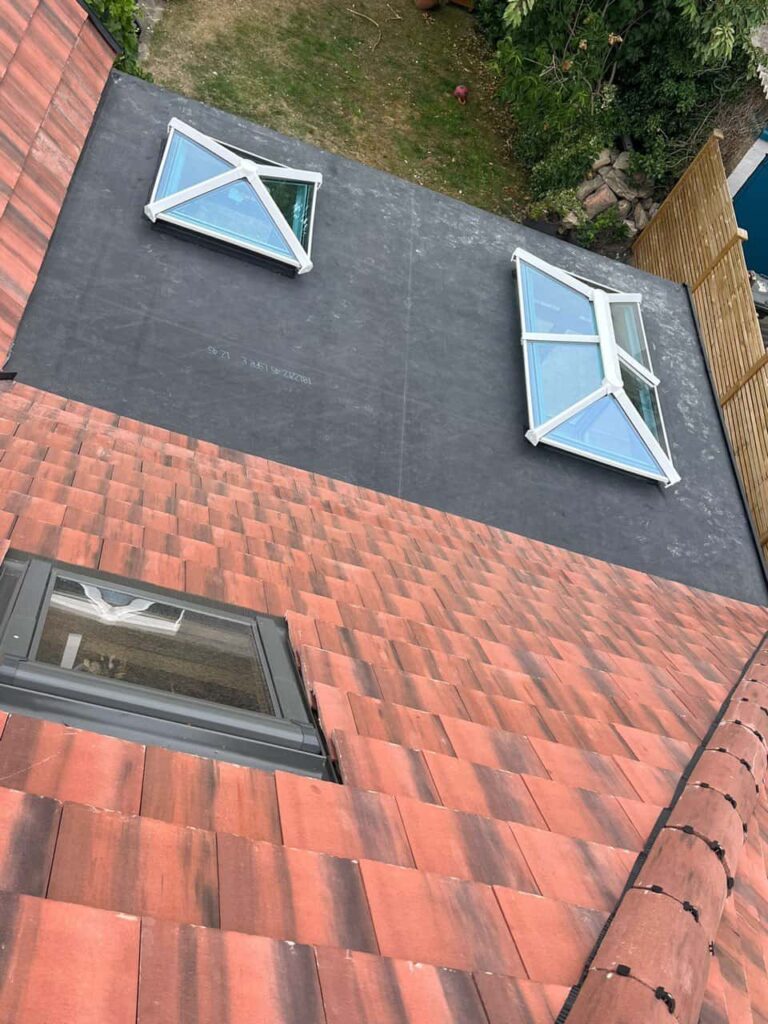Slate roofs are one of the most durable and elegant roofing options available, valued for their longevity and natural beauty. However, even the strongest materials are not immune to wear over time. Homeowners in Huntingdon often contact Huntingdon Roofing Repairs when they notice slipped or cracked slates — a common issue that, if ignored, can lead to more serious roofing damage.
Understanding the reasons behind these problems helps homeowners maintain their roofs more effectively and address early warning signs before they escalate.
The Natural Strength of Slate – and Its Vulnerabilities
Slate is a dense, natural stone that can last well over a century when properly installed and maintained. However, because it’s a natural material, it can still be affected by environmental stress, structural movement, or poor workmanship.
When a slate roof starts to show signs of slipping or cracking, it’s usually a combination of several underlying factors rather than a single cause.
1. Ageing Roof Components
While slate itself can endure for decades, the materials used to fix it in place — such as nails and battens — typically have a shorter lifespan. Over time, these fixings corrode, loosen, or weaken, allowing slates to shift out of position.
Common symptoms include:
- Slates appearing uneven or sliding down the roofline.
- Visible gaps where slates once overlapped.
- Debris collecting in valleys or gutters from fallen slate pieces.
At Huntingdon Roofing Repairs, we often find that replacing corroded nails or renewing battens restores the roof’s structural integrity without the need for a complete re-roof.
2. Weather Extremes and Temperature Fluctuations
Cambridgeshire’s changing climate can take a toll on slate roofs. Repeated exposure to freezing temperatures, heavy rain, and direct sunlight causes expansion and contraction cycles that can lead to cracks over time.
Moisture that seeps into fine fissures can freeze during colder months, expanding and widening the cracks. This process, known as freeze-thaw weathering, is one of the most common natural causes of slate deterioration.
Additionally, strong winds can loosen poorly fixed slates or lift those already weakened by age, leading to slipping or complete dislodgement.
3. Poor Installation or Workmanship
A slate roof’s lifespan depends heavily on the quality of its installation. If slates are fixed with improper techniques, uneven spacing, or low-quality nails, problems may arise within just a few years.
Signs of poor workmanship include:
- Slates not lying flat or overlapping correctly.
- Inconsistent gaps or misaligned rows.
- Early signs of slipping even in relatively new roofs.
Professional installation, such as that provided by Huntingdon Roofing Repairs, ensures slates are securely fastened using appropriate methods and materials that withstand local weather conditions.
4. Corroded or Rusted Fixings
Traditional slate roofs often use iron nails, which are prone to rusting over time. As they corrode, they lose strength and begin to fail — a problem commonly referred to as “nail sickness.”
Once fixings deteriorate, slates can no longer stay firmly attached to the battens and start slipping. This process typically begins subtly and progresses over several years, making early detection essential through regular inspections.
Modern repair methods often involve replacing damaged fixings with non-corrosive materials to restore roof stability.
5. Structural Movement in the Roof
Buildings naturally shift slightly over time due to settling foundations or thermal expansion. While small movements are normal, they can cause stress along the roofline, especially if the framework or battens were not designed to accommodate it.
This stress can crack slates or loosen their fastenings, particularly around hips, valleys, and ridges where the angles are more complex.
6. Walking or Heavy Impact on the Roof
Although slate is strong, it is also brittle. Excessive pressure from walking on the roof, installing satellite dishes, or performing other maintenance without proper precautions can easily cause cracks or displacement.
At Huntingdon Roofing Repairs, we always recommend that homeowners avoid walking on slate surfaces and instead contact professionals for inspections or repairs to prevent accidental damage.
7. Moss and Debris Build-Up
Over time, moss, lichen, and debris can accumulate between the slates, especially in shaded or damp areas. This build-up retains moisture, leading to premature weathering of the slates and fixings.
As moss expands during wet periods, it can push slates slightly apart, causing them to lift or crack. Regular roof cleaning and maintenance help prevent this subtle but damaging process.
8. Poor Ventilation and Condensation
Inadequate ventilation in the roof space can trap moisture beneath the slates, increasing the risk of rot in timber battens and corrosion in fixings. This hidden damage weakens the roof’s structure, eventually leading to loose or slipping tiles.
A well-ventilated roof allows air circulation, keeping the internal structure dry and reducing long-term deterioration.
The Importance of Early Action
A few slipped or cracked slates might seem minor at first, but they create openings where water can enter the roof structure. Left untreated, this can lead to timber decay, insulation damage, and interior dampness — turning a small repair into a costly restoration.
Timely inspections and maintenance from specialists like Huntingdon Roofing Repairs in Huntingdon, Cambridgeshire can identify early signs of wear before they develop into serious structural issues.
Conclusion
Slate roofs are built to last, but only when properly maintained and inspected. The main causes of slipping or cracking often come down to ageing fixings, harsh weather, poor installation, or gradual wear.
Regular professional inspections, careful maintenance, and prompt repairs are key to preserving your roof’s lifespan and protecting your home. Huntingdon Roofing Repairs in Huntingdon, Cambridgeshire offers expert assessment and repair services to keep slate roofs secure, watertight, and looking their best for decades to come.
Call us on: 01480 776 289
Click here to find out more about Huntingdon Roofing Repairs
Click here to complete our contact form and see how we can help with your roofing needs.

